12 January, 1999
12th January
Pole Temp:
min. -31.1 C
max. -27.7 C
F=1.8C+32
Wind Chill -39
The Blast
If the microphones on string #13 of the AMANDA telescope would work
properly, we could listen to the ice move. If the ice above the
bedrock that carried the telescope with it moved in a stop/start
fashion it would sound more noisy, and the resulting friction between
the ice and rock may produce light that may interfere with AMANDA's
eyesight, or "seeing." It may also be that in the future sound may
also be used to detect the presence of neutrinos.
The sound of the blast would travel through the ice at about 3,840
meters/second and hopefully be received in the 7Hz - 5 kHz frequency
range of the micropohones. By comparison, we hear sound in the 30 Hz
- 20 kHz range and a speaking voice ususally falls within the 400Hz -
3kHz frequency range. The hydrophones were attached to the string
at a depth of 2,250 and 2,350 meters beneath the surface of the ice;
the last 100 meters of the string.
About mid-morning, Ryan stood by the oscilloscope and adjusted it's
settings. The spike of sound received from the blast would have to
be large enought to go beyond the background noise now registering on
the scope.
I was outside the Martin A. Pomerantz Observatory (MAPO) with
"Blaster" John Wright holding a spool of detonation cable containing
explosive. John knelt by the pit that was 48 meters deep and 15
meters away from string #13. When everything was ready, we
communicated through walkie-talkie (radio) with Ryan inside
MAPO.
John shouted "Fire in the hole!" A geyser of white and red was
followed by a loud boom. The test hole had caved in from the blast.
Ryan radioed that he saw the spike of the blast register on the
microphone at 2,250 meters below the ice. Much to his delight,
later, after filtering out the rest of the background interference,
he found the second spike--that of the microphone at the bottom
of the string, 2,350 meters below the surface. The mikes still
worked having weathered being buried in the ice for a year.
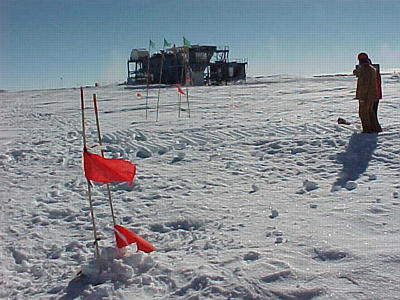
In the foreground is the pit that will be fitted with an explosive whose blast will be felt back at the dome 1/2 mile away. In the middle of the image is the #13 string site where the hydrophones lie in wait. In the background is MAPO in the dark sector.
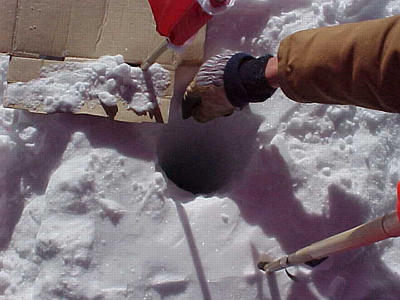
Looking into the void of the pit, 160 ft (almost) straight down.
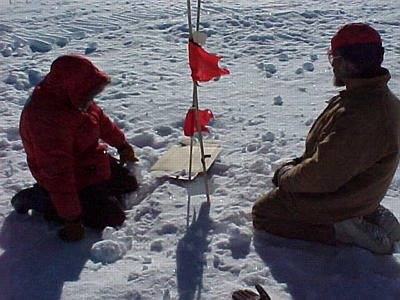
Ryan and John contemplate how to rig the blast.
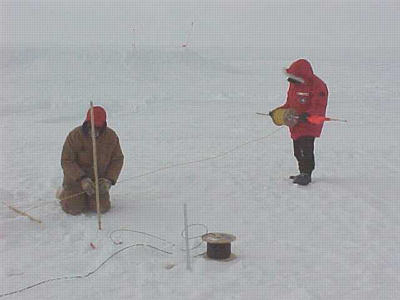
John prepares the detonation cord. I stepped back with the spool of cord; we wanted to be able to prevent the cord from falling into the hole if there happened to be a break in it. (photo: Phil Romenesko)
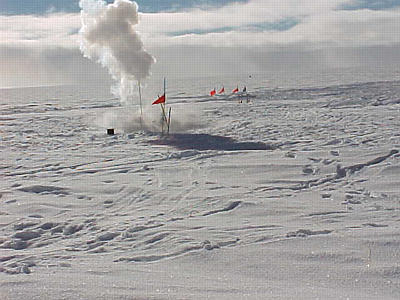
Fire in the hole!
Contact the TEA in the field at
.
If you cannot connect through your browser, copy the
TEA's e-mail address in the "To:" line of
your favorite e-mail package.
|
